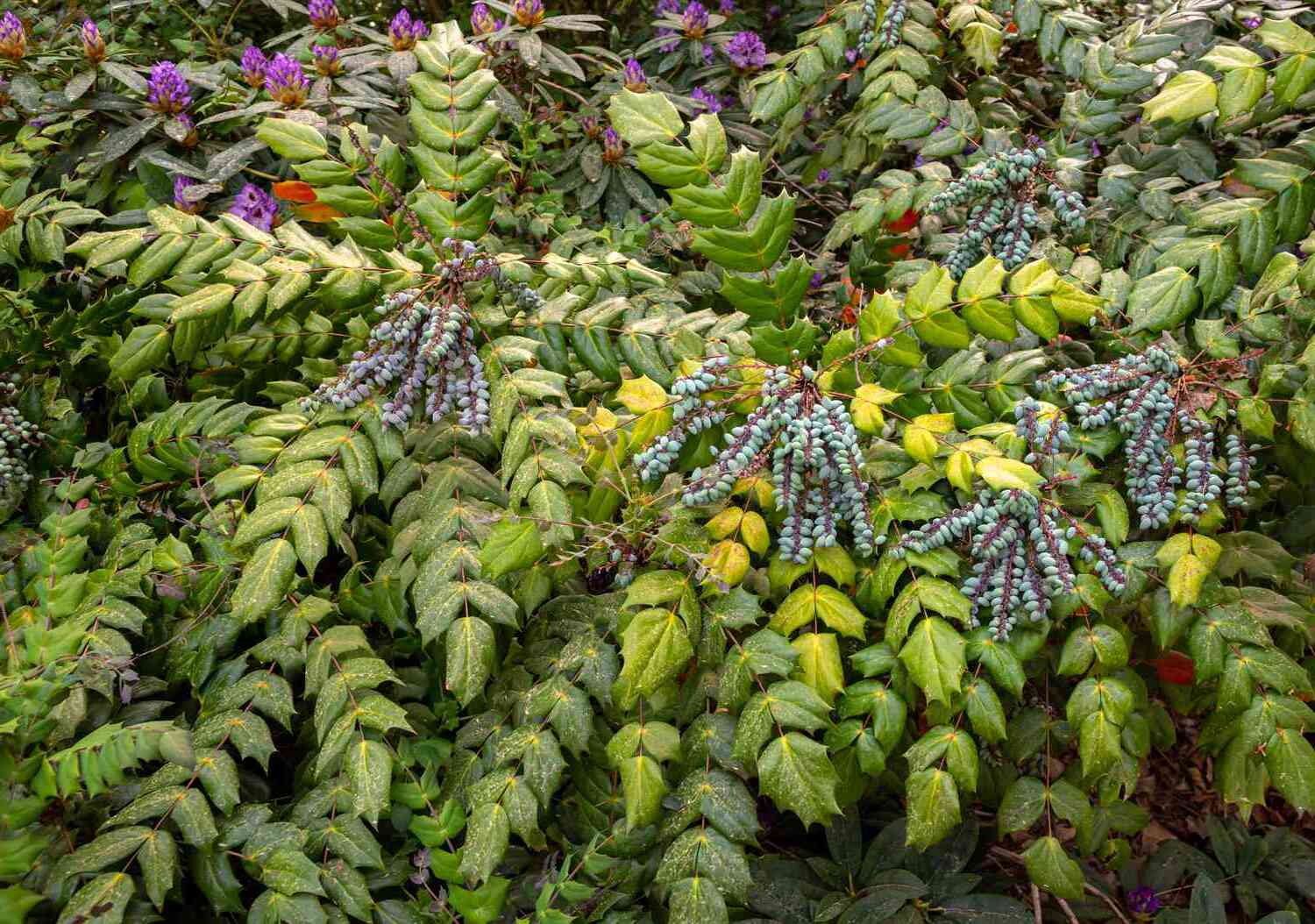
Mahonia, a fascinating plant genus, often catches the eye with its vibrant yellow flowers and glossy, holly-like leaves. But what makes this plant so special? Mahonia is not just a pretty face in the garden; it has a rich history, unique characteristics, and various uses that make it stand out. From its origins in Asia and North America to its medicinal properties, there's a lot to learn about this intriguing plant. Whether you're a gardening enthusiast or simply curious about nature, these 25 facts about Mahonia will give you a deeper appreciation for this remarkable genus. Ready to dive in? Let's get started!
What is Mahonia?
Mahonia is a genus of evergreen shrubs known for their striking foliage and vibrant yellow flowers. These plants are often used in landscaping due to their hardiness and ornamental appeal. Let's dive into some fascinating facts about Mahonia.
- Mahonia belongs to the Berberidaceae family, which includes around 70 species.
- The plant is named after Bernard McMahon, an Irish-American horticulturist.
- Mahonia is native to East Asia, the Himalayas, North America, and Central America.
- The leaves are pinnate, meaning they have leaflets arranged on either side of a central stem.
- Mahonia's flowers bloom in late winter to early spring, providing early nectar for pollinators.
Unique Characteristics of Mahonia
Mahonia stands out due to its unique features. From its leaves to its berries, each part of the plant has something special to offer.
- The leaves of Mahonia are often spiny and holly-like, giving it a distinctive look.
- Mahonia produces clusters of small, bright yellow flowers that are highly fragrant.
- After flowering, Mahonia develops blue-black berries that are edible but very tart.
- The berries are rich in vitamin C and can be used to make jams and jellies.
- Mahonia leaves change color in the fall, often turning red or purple.
Mahonia in Landscaping
Mahonia is a popular choice for gardeners and landscapers due to its versatility and low maintenance.
- Mahonia is drought-tolerant once established, making it ideal for xeriscaping.
- It thrives in both full sun and partial shade, adapting well to different garden conditions.
- The plant can be used as a hedge or border due to its dense growth habit.
- Mahonia is resistant to deer and rabbits, reducing the need for pest control.
- It can grow in a variety of soil types, including clay, loam, and sandy soils.
Ecological Benefits of Mahonia
Beyond its beauty, Mahonia plays a significant role in supporting local ecosystems.
- The flowers attract bees, butterflies, and other pollinators, aiding in plant reproduction.
- Birds are drawn to the berries, which provide a food source during winter months.
- The dense foliage offers shelter and nesting sites for small animals and birds.
- Mahonia can help prevent soil erosion due to its robust root system.
- The plant contributes to biodiversity by supporting various wildlife species.
Cultural and Medicinal Uses of Mahonia
Mahonia has been used in traditional medicine and cultural practices for centuries.
- Native American tribes used Mahonia roots to treat digestive issues and skin conditions.
- The plant contains berberine, an alkaloid with antibacterial and anti-inflammatory properties.
- Mahonia root extracts are used in herbal medicine to support liver health and immune function.
- In Chinese medicine, Mahonia is known as "Oregon grape" and is used to clear heat and toxins.
- The plant's bark and roots can be used to make a yellow dye for textiles.
Mahonia is more than just a pretty plant. Its unique characteristics, ecological benefits, and cultural significance make it a valuable addition to any garden or landscape.
Final Thoughts on Mahonia
Mahonia is more than just a pretty plant. Its medicinal properties, unique appearance, and hardiness make it a standout in any garden. From its vibrant yellow flowers to its blue-black berries, Mahonia offers both aesthetic appeal and practical benefits. It's a low-maintenance plant that can thrive in various conditions, making it a great choice for both novice and experienced gardeners. Plus, its ability to attract pollinators like bees and butterflies adds another layer of value. Whether you're looking to enhance your garden's beauty or explore natural remedies, Mahonia has something to offer. So, next time you're planning your garden, consider adding this versatile plant. You'll not only enjoy its beauty but also its many benefits. Happy gardening!
Was this page helpful?
Our commitment to delivering trustworthy and engaging content is at the heart of what we do. Each fact on our site is contributed by real users like you, bringing a wealth of diverse insights and information. To ensure the highest standards of accuracy and reliability, our dedicated editors meticulously review each submission. This process guarantees that the facts we share are not only fascinating but also credible. Trust in our commitment to quality and authenticity as you explore and learn with us.
